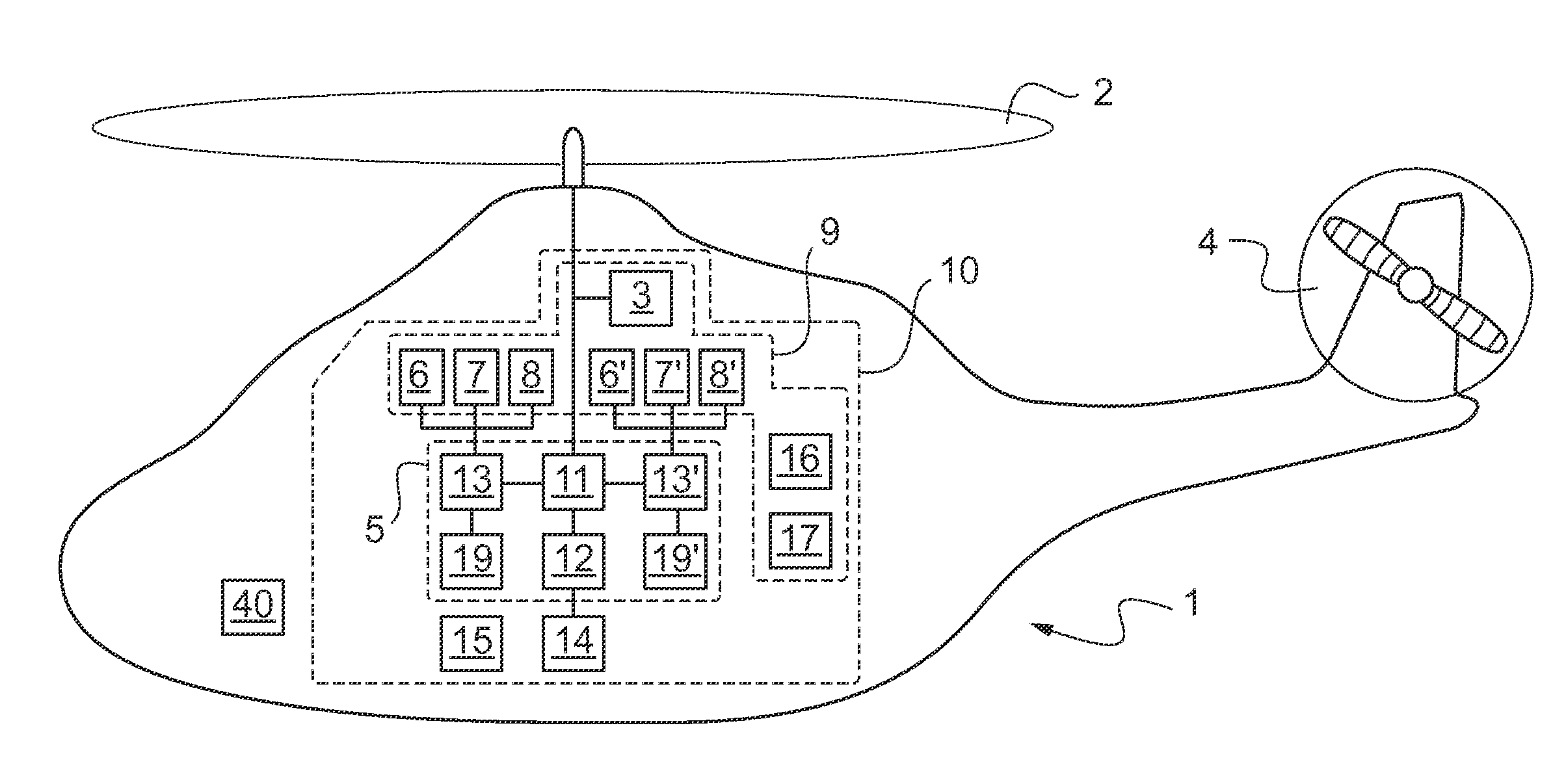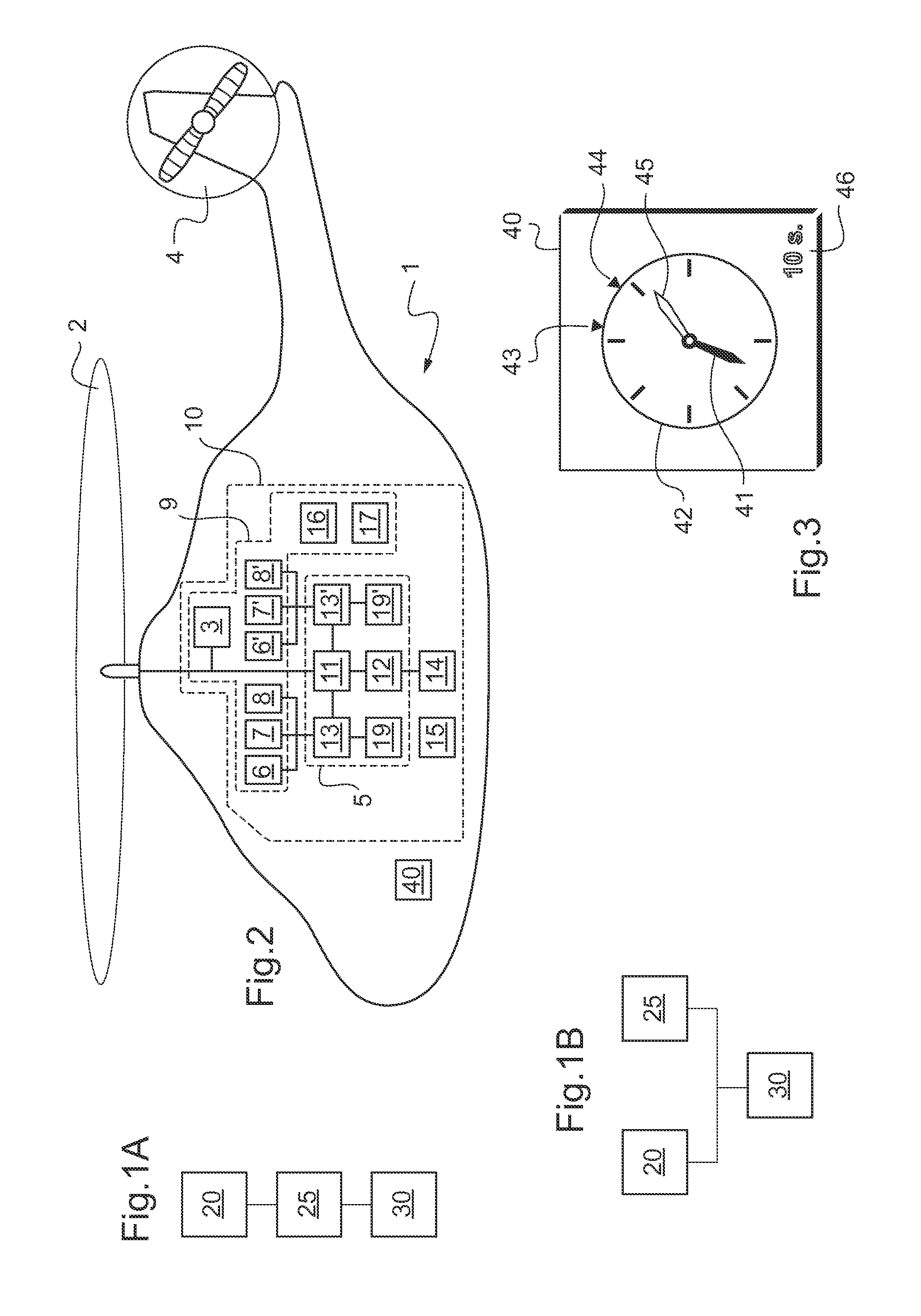Method of managing an engine failure on a multi-engined aircraft having a hybrid power plant
a hybrid power plant and multi-engine technology, applied in the direction of propellers, rotorcraft, air transport, etc., can solve the problems of degraded performance, difficult operation in the piloting of aircraft, and drawbacks of single-engine aircra
- Summary
- Abstract
- Description
- Claims
- Application Information
AI Technical Summary
Benefits of technology
Problems solved by technology
Method used
Image
Examples
Embodiment Construction
[0134]FIGS. 1A and 1B describe two ways in which the method of the invention for managing an engine failure on a rotary wing aircraft 1 can be conducted. FIG. 2 shows a rotary wing aircraft 1 having a device 10 of the invention for managing engine failure.
[0135]The method and the device 10 thus enable the pilot to fly the aircraft safely, i.e. with sufficient engine power, in spite of a failure of an engine of the aircraft and without such safe flight causing the engine that remains operational to be stressed beyond predetermined operating conditions.
[0136]A device 10 of the invention, as shown in FIG. 2, comprises a hybrid power plant 5 having two fuel burning engines 13, 13′, an electric machine 12 capable of delivering a maximum power Wmax, a main gearbox “MGB”11, and two electronic control units “EECU”19, 19′, each connected to a respective one of the engines 13, 13′ and providing the operating characteristics of each engine 13, 13′. The device 10 also has electrical energy stor...
PUM
 Login to View More
Login to View More Abstract
Description
Claims
Application Information
 Login to View More
Login to View More - R&D
- Intellectual Property
- Life Sciences
- Materials
- Tech Scout
- Unparalleled Data Quality
- Higher Quality Content
- 60% Fewer Hallucinations
Browse by: Latest US Patents, China's latest patents, Technical Efficacy Thesaurus, Application Domain, Technology Topic, Popular Technical Reports.
© 2025 PatSnap. All rights reserved.Legal|Privacy policy|Modern Slavery Act Transparency Statement|Sitemap|About US| Contact US: help@patsnap.com


